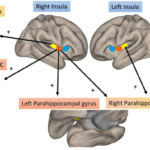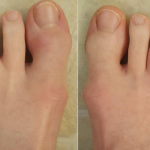 EULAR 2021—Should we lump, or should we split? This was the interesting question posed during EULAR 2021 by Laura Coates, MBChB, MRCP, PhD, clinician-scientist and senior clinical research fellow at the National Institute for Health Research, University of Oxford, England, in her presentation on psoriatic arthritis (PsA) outcome assessments in clinical practice and trials.
EULAR 2021—Should we lump, or should we split? This was the interesting question posed during EULAR 2021 by Laura Coates, MBChB, MRCP, PhD, clinician-scientist and senior clinical research fellow at the National Institute for Health Research, University of Oxford, England, in her presentation on psoriatic arthritis (PsA) outcome assessments in clinical practice and trials.
Why do we need outcome measures? Dr. Coates explained that, in seeking to know if the treatment of patients is achieving success, rheumatologists hope to identify the true status of disease activity. However, this proposition is unlike the treatment of hypertension, which can use blood pressure as the only relevant outcome measurement. No single test, laboratory or imaging study, or other variable can capture the totality of true disease activity in a condition like PsA.
Each outcome measure used in PsA provides an individual perspective on a patient’s status. By putting all these outcomes together, the clinician gains a better sense of the global disease activity.
Next, Dr. Coates asked: What do we need to measure in PsA? Typically, outcomes of interest in rheumatology relate to degree of active inflammation, symptoms, functional impact on a patient’s ability to work or participate in exercise and leisure activities, and quality of life. Hard outcomes, such as bone or joint damage and degree of disability, are also important measures to the clinician and patient alike.
Dr. Coates’ third question: What matters to patients? Historically, many outcome measures have been developed by clinicians and researchers, with less direct input from patients themselves.
In 2017, a study from Tilett et al. ranked outcomes identified as important to patients with PsA and examined their representation in existing composite measures. The researchers collected input from 31 patients with PsA via seven meetings using nominal group technique, a structured method for brainstorming that encourages contributions from everyone and facilitates quick agreement on the relative importance of topics. The treatment outcomes ranked highest by patients were improvements in pain, fatigue, physical fitness, halting or slowing of damage and quality of life/well-being. The authors of the study point out that, in reviewing the existing composite measures for PsA, no single measure adequately identified all of these outcomes.1
According to Dr. Coates, because pain and fatigue are consistently regarded by patients as critical concerns, recent work has examined if these domains should be combined in outcome measurements.
However, in a study of 141 patients with PsA, in which researchers used modified versions of the Composite Psoriatic Disease Activity Index (CPDAI) and the Group for Research and Assessment of Psoriasis and Psoriatic Arthritis (GRAPPA) Composite Exercise (GRACE) measures, the addition of pain and fatigue did not improve the measures’ ability to detect disease status in terms of requiring treatment escalation.2


